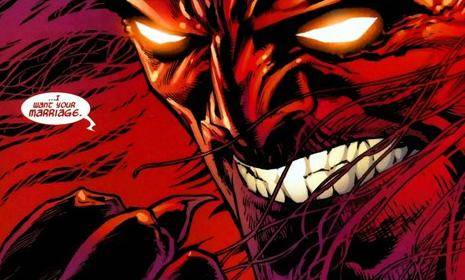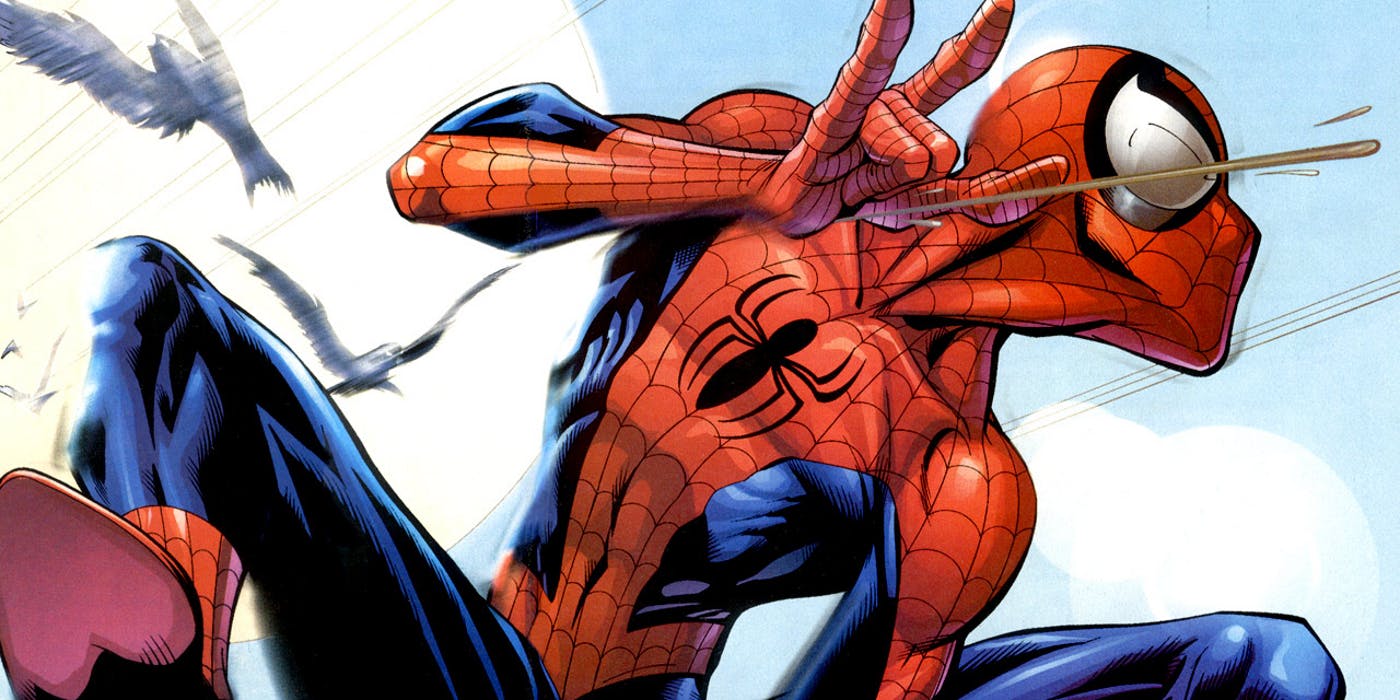
Rick Remender has been keeping busy during this period of quarantine and social distancing by releasing art samples, rejected pitches, unused clips from the TV show based on his Image series Deadly Class and other behind the scenes material. Now we learn that years ago, he pitched a Kazar run where the Savage Land is brought to Central Park, a World War II showdown between Namor and a Japanese genetically altered supersoldier, Silver Surfer fighting Mephisto for the soul of mankind in the middle of the 22nd Century, and the Guardians of Galaxy trying to change a world where the bad guys had won centuries earlier. He ended up working on several Marvel titles including Uncanny X-Force, The Punisher, and Venom, and he has focused on creator owned stuff for the last few years. But he had plans for Spider-Man and a relatively obscure spinoff character.
Every now and then, an accepted pitch is included as an extra in a TPB or released online. Those are useful for anyone interested in writing comics to see what worked, but it’s also important to consider why something didn’t get approved.

Remender and artist Tony Moore (the co-creator of The Walking Dead) had a Rocket Racer pitch that was initially accepted. Remender posted some of Moore’s character designs online.
Marvel ultimately opted not to go forward with the book. However, Remender and Moore clearly impressed the Spider-Man editorial offices, as they were given the Flash Thompson Venom series. This probably sold better than a Rocket Racer series would.

On the other hand, a halfway decent Rocket Racer series would probably have been turned into a screenplay by Sony.

The basic idea is that the company responsible for the radioactive spider that gave Peter Parker his abilities had tried to replicate the process with volunteers, who were held captive for years and have now escaped.
It’s entirely possible that Rick Remender would have been awesome on Spider-Man. CBR readers voted his 2010 Uncanny X-Force as one of the best comic book runs ever, where he built on the idea of the X-Force as a mutant team willing to cross the lines the X-Men can’t to tell a long-term story about the consequences of a single decision.
A curious detail is that there’s nothing in the pitch, at least the half-page we see, about Spider-Man’s romantic life. It could work if the marriage were restored, if Peter were dating Carlie Cooper, if Peter were dating an entirely new character, or if Peter wasn’t involved with anyone at all. The pitch didn’t touch on Peter’s job or friends either. That might be wise, since Remender wouldn’t necessarily know what Peter’s status quo is going to be when the contemporary stories were wrapped up.
I could understand why Marvel didn’t approve the story. With Remender’s pitch, the logistical requirement is that you need space to tell a long-term arc with new villains, which isn’t always a good fit for Marvel’s plans with Spider-Man. You’re not always going to have 25 or so issues to focus on four new interconnected bad guys who have been shut-ins and haven’t been operating behind the scenes. The story itself needs to be seeded, to set up why Peter would be interested in his origins.

Part of the problem with Remender’s pitch could have been timing. This was during Brand New Day, when Marvel had a rotating team of writers on Amazing Spider-Man. This arc is going to be difficult in that context. One approach would be that this would be an ongoing story that Remender focuses on during his issues of Amazing Spider-Man. So he could do a three issue story in which the insect themed lunatics are released, followed by nine issues by other writers doing their stories, followed by a three issue story in which Spider-Man encounters the Parasitic Worm, followed by ten issues by the other guys, and so on. This requires the other stories in Amazing Spider-Man corresponding to an extended arc with new villains for a long period of time.
There is another way it could work for an year or so in a title with rotating writers. The other writers could each have one of the villains to focus on. So Remender could do a four issue arc introducing the insect lunatics. Then Mark Waid could tell the story of the Red Ant. Dan Slott could tell a story connecting the new villains to the guy from the Michelinie/ McFarlane who was bitten by a radioactive jackrabbit. Fred Van Lente could write about the Toxic Beetle. Remender could conclude with the final showdown. This would require a new and relatively inexperienced writer to be accepted as the architect of one of Marvel’s flagship title, which might not go over well with the writers who had been setting up their own stories.

It was also a particularly poor fit at the time, about half way through the Brand New Day run. Marvel had spent the first seven months of Brand New Day focusing on new villains with the likes of Mister Negative, Menace, Freak, Paper Doll and Ana Kraven, as part of an effort to make the return of the classic villains more epic. By 2009, the big villains were back in the Gauntlet storyline, which ended with “Grim Hunt,” published in July 2010. “Origin of the Species” brought the rotating writers approach to an end, with a battle royale against villains from the previous 100 issues. A pitch about a new set of villains didn’t necessarily fit Marvel’s approach at the time.
It might work in Amazing Spider-Man, but Marvel had other plans.
One compromise would have been to publish this as a satellite book. It focused on entirely new villains and the pitch didn’t really touch on Peter’s employment, so it wouldn’t really be affected by whatever’s going on in Amazing Spider-Man, and wouldn’t restrict the writer of that book. However, I could understand why Marvel might think a satellite book (which typically will not sell very well) focused on new villains isn’t the way to go.
Dan Slott ended up introducing a new character who gained powers through the spider bite with Silk. However, that could actually work pretty well with Remender’s pitch, since it provides an in-continuity reason for some potentially powerful people to be aware that radioactive spiders can give people superpowers. So maybe we’ll see this in the Spider-Man comics one day.
What do you guys think? Was this a run you would have liked to see? Are you happy things turned out for Spider-Man and for Rick Remender?










Remender’s work, at least for me, is intriguing; I enjoyed what he has done for Marvel, especially his run on X-Force and Captain America (with John Romita Jr.) – they were original, to say the least.
But then again, when it comes down to Spider-Man, his pitch has the same formula as before: going back to the hero’s past and explore an element of his origin.
Sounds cool, but… It lacks the originality factor he normally applies to it.
I wonder how Spider-Man writers feel when confronted with the assignment of writing his main title, and what are the editorial limitations imposed – if there are any.
Hornacek, there was no “they” in the pitch. It was just Remender. Perhaps he had some kind of way to connect it to the Final Adventure. Or he pitched a story having not read a mini series with a character published over a decade earlier.
How would this have fit into what we learned about the company that created the device that gave Peter his powers during The Final Adventure mini-series? Does it completely ignore that? Do they even remember/know that story took place? Like how John Byrne said he “fixed” a plot hole in Chapter One by explaining why the Burglar was at Ben and May’s house, when obviously he never knew that ASM #200 had already explained this